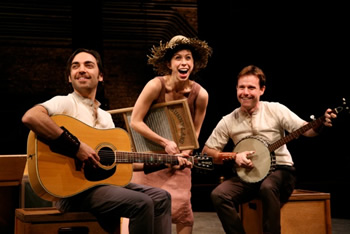In a concert titled “Zephyr – Gentle Winds,” ten wind players, joined by two string players and one keyboard player, made some interesting and enjoyable music at Chapel of the Cross before an appreciative audience on a Sunday afternoon. Part of the Historically Informed Performances series under way in the Triangle in January and February, Beverly Biggs and the Baroque and Beyond ensemble served up some wonderful music that was a showcase for some nimble fingers and impressive lung capacity.
A program of this sort has obvious strengths and a few minor weaknesses. The strengths include the display of musical skills by the performers, the recreation of musical performances from mainly the 18th century, and the exposure to well-known and not-as-well-known composers from the period. The minor weaknesses include the somewhat limited dynamic range of period wind instruments of this kind – mainly from mezzo-piano to mezzo-forte – and a sameness of sound from some groupings of instruments. Fortunately, these weaknesses were greatly overshadowed by the considerable strengths exhibited by the performers on their instruments.
An example of one of the strengths was the performance of Jan Dismas Zelenka’s Sonata in C-minor for two oboes, bassoon and basso continuo. While he might have been considered the most important Baroque-era Czech composer, he is not as widely known as, say, Vivaldi or Telemann, both of whom were also represented on the program. With William Thauer, a regular performer with the North Carolina Baroque Orchestra , as first oboe, and Aaron Reichelt of New York, second oboe, this composition demanded and received incredible interplay between the two principals, ably supported by Sally Merriman, baroque bassoon, Barbara Blaker Krumdieck, baroque cello, and Biggs playing harpsichord. The oboes, made of boxwood, produced a splendid sound for this piece. Thauer’s oboe was more in the tenor range, and Reichelt’s was more in the baritone range, and the two instruments blended beautifully. What was more impressive, however, were Thauer’s virtuoso leads and solos, with eighths and sixteenths rushing furiously from one bar to the next – think quick-paced vocal or choral Melisa’s, and you get something of an idea of Thauer’s playing. Merriman, too, had her share of rapid sequences, as did Reichelt. One could not determine whether Thauer, Reichelt, or Merriman were out of breath at the end of the second allegro movement, though some audience members certainly were!
The concert opened with Telemann’s Concerto in F-major, TWV 44:41, scored for nearly all the players; this was one instance in which the flutes (traverse flutes made from ebony or grenadilla) and the recorders produced similar sounds in similar dynamic ranges, although the flutes, played by John O’Brien and Tom Moore, generally were a bit darker and lower than the recorders, played by Frances Blaker and Jennifer Streeter. The harpsichord, cello (Krumdieck) and bassoon provided a good foundation for the lead players.
Another less well known composer, J.B. de Boismortier, was represented by a Concerto in E-minor, Op. 15, No. 6, played by four traverse flutes (O’Brien, Moore, Rebecca Troxler and Nancy Schneeloch-Bingham), bassoon, cello (Chris Nunnally), and harpsichord. More than once, especially in the opening adagio movement, the sound from the winds bore a faint and fragmentary resemblance to distant train whistles, but the overall effect was quite pleasing. The second allegro movement had some lovely flute duets; Nunnally executed some rapid fingering in the final allegro movement; and Troxler and Schneeloch-Bingham created an engaging swirling sound in their duet near the end of the movement.
A second piece by Telemann, Quatour in D-minor, TWV 43:d1, is scored for recorder, two flutes and basso continuo, and Troxler, Schneeloch-Bingham, and Blaker were the lead wind players, joined by Nunnally and Biggs. The unaccompanied trio in the third largo movement was especially nice, and the closing allegro movement had some sections in fast tempos that contrasted nicely with a slower middle portion featuring the two flutes and then all three wind players.
In addition to showing his performing skills, Thauer also showed his arranging skills with Antonio Vivaldi’s ever-popular “La Follia,” RV 63, the familiar theme and variations, this time scored for all players. The main theme was followed by at least 18 variations (it was easy to lose count) arranged for full ensemble at the beginning and end, and for smaller groupings of instruments in the middle. One variation featured just the oboes; another highlighted flutes against plucked cello; another was for two oboes, two flutes and bassoon; another for two flutes, recorder and cello. Blaker and Streeter played at least three recorders, including the tiny sopranino recorder, which sounds like a piccolo. Not only was the piece a crowd-pleaser, but the musicians also seemed to have a lot of fun playing, and it was a grand way to bring a most enjoyable concert to a close.
The HIP Festival continues through February 7. For details, see our calendar.












